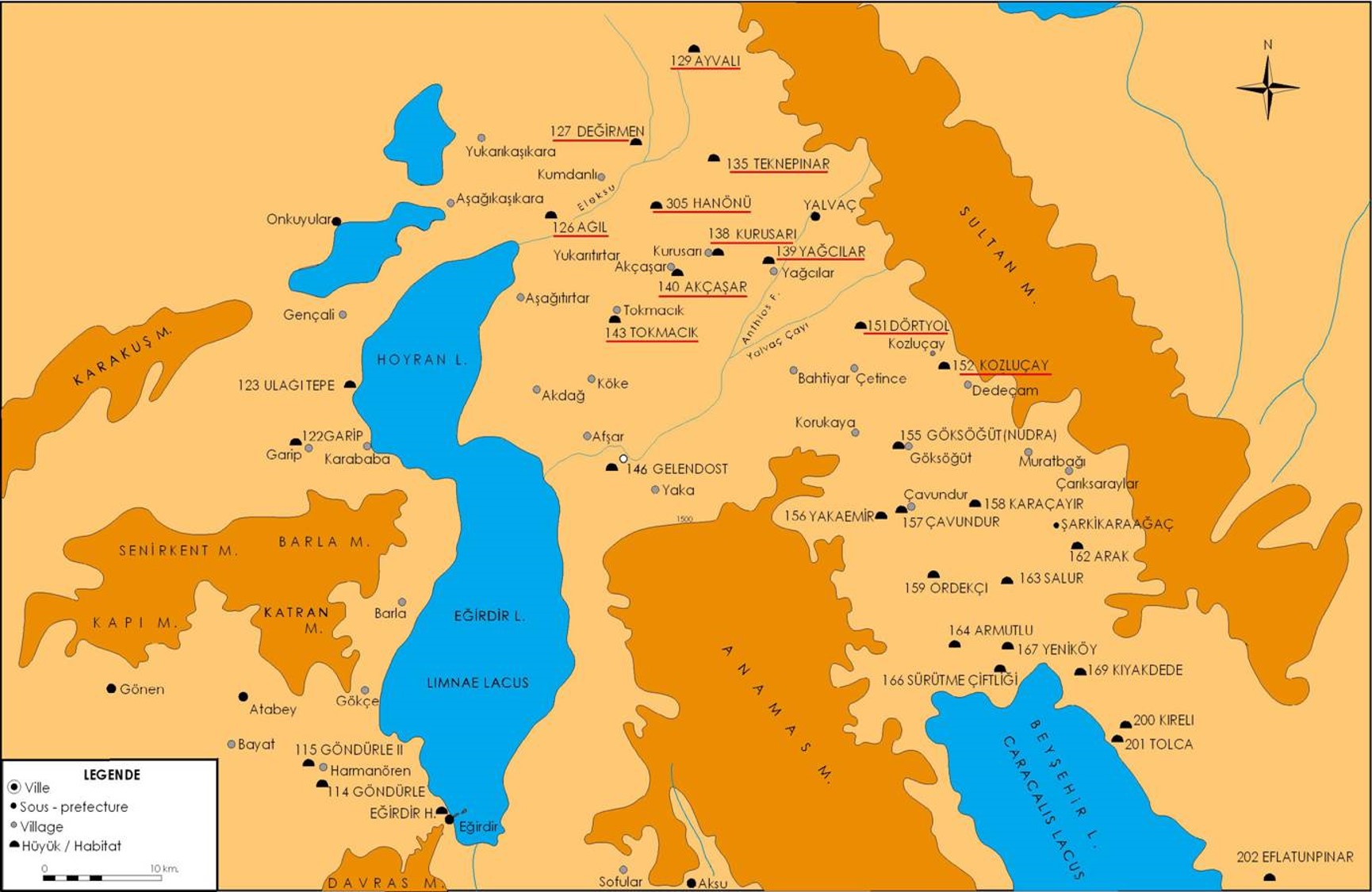ARHAELOGICAL SURVEY IN YALVAÇ, GELENDOST AND ŞARKİKARAĞAÇ DISTRICTS IN ISPARTA
ARCHAELOGICAL SURVEY IN YALVAÇ, GELENDOST AND ŞARKİKARAAĞAÇ DISTRICTS IN ISPARTA
Prof. Dr. Mehmet ÖZHANLI
The project, which has been carried out by Prof. Dr. Mehmet Özhanlı on behalf of Süleyman Demirel University since 2017 covers Yalvaç, Gelendost and Şarkıkaraağaç districts of Isparta. It is an extensive study aimed at documenting all of the archaeological settlements and findings within the borders of these three districts. One of the aims of the project is to understand the territory of Antiocheia, which we are excavating. This study explores the connection of Antiocheia to the neighboring cities, road networks and small settlements in the city. Starting from the Paleolithic Ages, caves, mounds and classical settlements in the region as well as their necropolis and farms were explored and the history of the region as well as the settlements were revealed.
The research was started in Yalvaç District and is completed in 2020. Özgüney, Özbayat, Kuyucak, Bağkonak, Kozluçay, Dedeçam, Altıkapı, Koruyaka, Çetince, Bahtiyar, Eğirler, Höyüklü, Yağcılar, Kurusarı, Akçaşar, Tokmacık, Eyüpler, Aşağı İleği, Yukarı İleği, Celeptaş, Kumdanlı and Yukarı Kaşıkara villages of Yalvaç district were investigated. The history of these villages, which have been existing since the prehistoric times, began with the settlement mounds (höyük) dating back to the Bronze Ages; they reached modern times without interruption. All of the explored villages have been located either directly above or right next to the former/ancient settlements. Therefore, there are archaeological findings belonging to the Roman Imperial Period and later in the centers of all the villages. There are at least three settlements within the borders of each village. All the settlements are connected to each other and to Antiocheia by a developed road network that was built in the Bronze Age and continues to be used today.
